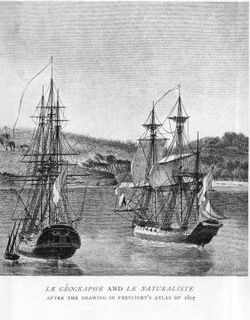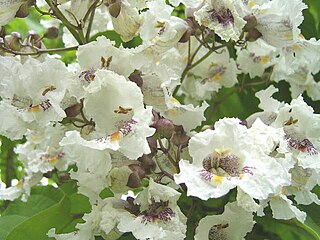 W
WJean-Charles Adolphe Alphand, born in 1817 and died in 1891, interred at Père Lachaise Cemetery, was a French engineer of the Corps of Bridges and Roads.
 W
WAlain Baraton, born 10 September 1957 in La Celle-Saint-Cloud, is a master gardener. Since 1982, he has been gardener-in-chief of the park at the Palace of Versailles
 W
WJean-Pierre Barillet-Deschamps was a French horticulturist and landscape architect. He was the chief gardener of Paris during the reign of Emperor Napoleon III, and was responsible for planting the great gardens of the French Second Empire; the Bois de Boulogne, the Bois de Vincennes, Parc Montsouris, Parc des Buttes-Chaumont, the remaking of the Luxembourg Garden, and many smaller Parisian parks and gardens. He was also responsible for planting trees along the new boulevards of Paris. His landscape gardens, with their lakes, winding paths, sloping lawns, groves of exotic trees and flower beds, had a large influence on public parks throughout Europe and in the United States.
 W
WDésiré Georges Jean Marie Bois was a French botanist, horticulturist and agronomist.
 W
WJean-François Cagnet, born in Baumont in 1756, was a French gardener who worked under the botanist André Michaux in the course of the Nicolas Baudin voyage of scientific discovery (1800–1804).
 W
WJean-Nicolas Céré was a French botanist and agronomist born on the Indian Ocean Isle de France but educated in Brittany and Paris. On the Isle de France he was befriended by Pierre Poivre (1719–1786), administrator of the Isle de France and Ile Bourbon (Réunion), who he assisted in the cultivation of spices. When Poivre was recalled to France in 1773 Céré was appointed Director of the Royal Garden at Monplaisir, a position he held from 1775 to the time of his death in 1810.
 W
WJules Alexandre Daveau was a French botanist known for his investigations of Portuguese flora.
 W
WFélix Delahaye was a French gardener who served on the Bruni d'Entrecasteaux voyage (1791–93) that was sent by the French National Assembly to search for the missing explorer Jean-François La Perouse. He was also one of the earliest European gardeners to work in Australia.
 W
WClaude Desgots was a French architect and landscape architect, who designed French formal gardens in France and England. He worked with and was strongly influenced by André Le Nôtre, the designer of the gardens at Vaux-le-Vicomte and Versailles that set the pattern for grand gardening in France up to the Revolution. In spite of increasing competition from the informal English landscape style, the French tradition was kept vital through apprenticeship connections in the generation following Le Nôtre's death in 1700, and a principal representative in this tradition was Claude Desgots, "a worthy heir and a great talent in gardening", remarked the master teacher of architecture Jacques-François Blondel.
 W
WThe family of Dezallier d'Argenville produced two writers and connoisseurs in the course of the 18th century.
 W
WDominique Girard was a seventeenth-century French garden designer and water engineer.
 W
WJean-Marie Gonod (1827–1888) was a French rosarian.
 W
WJules Léopold Gravereaux was a French rosarian. He was a top executive at the department store Le Bon Marché and in 1892 purchased land at the village of L'Haÿ about 8 km south of Paris. There, he built the first ever complete garden devoted exclusively to roses, the Roseraie de L'Haÿ. It became so popular that a few years later the village changed its name to L'Haÿ-les-Roses.
 W
WAntoine Guichenot or Guichenault (1783–1867) was "gardener's boy" on the 1801—1804 French scientific voyage to Australia under Nicolas Baudin, and the 1817 voyage under Louis de Freycinet. Very little is known about him, but the records of Baudin's voyage, together with annotations on surviving plant specimens collected by him, suggest that he was poorly educated, with atrocious spelling and little knowledge of botany, yet worked extremely hard, collecting more plant specimens than the officially appointed botanist, Jean Baptiste Leschenault de la Tour, and, despite his poor literacy, labelling them with much more useful annotations. There were five gardeners altogether on the Baudin voyage, the others being Antoine Sautier, François Cagnet and Merlot, all under the supervision of Head Gardener Anselme Riedlé.
 W
WFrançois Hérincq was a French botanist and gardener at the Muséum d'Histoire Naturelle in Paris. He was also the editor of "L'Horticulteur français, journal des amateurs et des intérêts horticoles", which was published from 1851-1872, illustrating some 414 plants.
 W
WJean-Baptiste de La Quintinie was a French lawyer, gardener and agronomist who served under Louis XIV. Named director of the royal fruit and vegetable gardens by the king in 1670, he created between 1678 and 1683 the Potager du roi near the Palace of Versailles.
 W
WJoseph Bory Latour-Marliac was a French lawyer and horticulturalist noted for breeding water lily hybrids. Latour-Marliac founded a water lily nursery at Le Temple-sur-Lot in 1875. A display of his plants at the Exposition Universelle of 1889 in Paris attracted the attention of the painter Claude Monet who then obtained water lilies for his garden in Giverny from Latour-Marliac.
 W
WJean-Louis-Auguste Loiseleur-Deslongchamps was a French physician and botanist. The standard author abbreviation Loisel. is used to indicate this person as the author when citing a botanical name.
 W
WJoseph Pernet-Ducher (1859–1928) was a French rose breeder who is recognized for his work in the development of the modern Hybrid tea rose. Pernet and his father, Jean Pernet, worked together in the 1880s to develop the first yellow remontant Hybrid perpetual rose. After Jean Pernet's death in 1896, Pernet-Ducher continued their work and later introduced 'Soleil d'Or' in 1900. 'Soleil d'Or' initiated a new class of tea roses known as Pernetiana roses and is considered the ancestor of the modern Hybrid tea rose.
 W
WJean Claude Pernet, père was a French nurseryman and rose breeder, best known for his Hybrid Perpetual and Bourbon rose varieties. His most popular roses include 'Baroness Rothschild' (1868), 'Merveille de Lyon (1882), and 'Triomphe des Noisettes' (1887). His father, Claude Pernet, and son Joseph Pernet-Ducher were also influential nursery owners and rose breeders.
 W
WPierre-Paul Saunier (1751–1818) was a gardener who worked first at Montbard in the Bourgogne region in eastern France, and then at the Jardin du Roi in Paris where he was a protégé of head gardener André Thouin (1746–1824). In 1785, Thouin selected him to accompany the explorer-botanist André Michaux (1746–1802) to North America where he was to assist in the establishment of a royal garden for the French crown.
 W
WOlivier de Serres (1539–1619) was a French author and soil scientist whose Théâtre d'Agriculture (1600) was the accepted textbook of French agriculture in the 17th century.
 W
WClaude-Henri Watelet was a rich French fermier-général who was an amateur painter, a well-respected etcher, a writer on the arts and a connoisseur of gardens. Watelet's inherited privilege of farming taxes in the Orléanais left him free to pursue his avocations, art and literature and gardens. His Essai sur les jardins, 1774, firmly founded on English ideas expressed by Thomas Whately, introduced the English landscape garden to France, as the jardin Anglois. The sociable Watelet, who was born and died in Paris, was at the center of the French art world of his time.